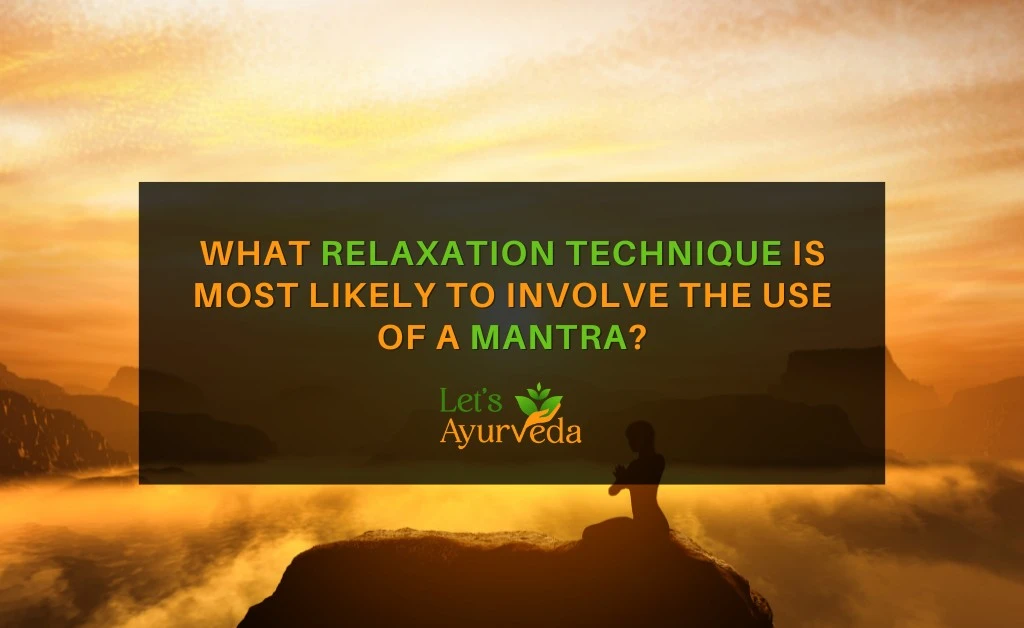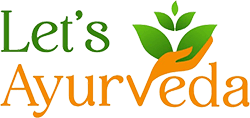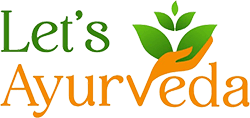Introduction
In today's fast-paced world, finding effective ways to relax and relieve stress has become more crucial than ever. One age-old technique that has stood the test of time is using mantras. But what relaxation technique is most likely to involve using a mantra?
In this complete guide, we will delve deep into the world of relaxation techniques, explore the role of mantras in achieving tranquility, and provide valuable insights and practical tips for incorporating mantras into your daily routine.
What Relaxation Technique Is Most Likely to Involve the Use of a Mantra?
Understanding Mantras and Their Significance
To answer this question, let's begin by unraveling the essence of mantras. Mantras are sacred sounds, words, or phrases with profound spiritual and psychological power. They have been employed for centuries in various cultures and traditions to achieve mental clarity, inner peace, and spiritual awakening.
Yoga and Meditation: A Harmonious Duo
One of the most common relaxation techniques involving a mantra is meditation, especially in the context of yoga. In yoga, mantras are often chanted or silently repeated during meditation sessions. This practice, known as "mantra meditation," helps individuals enter deep relaxation and heightened awareness.
The Science Behind Mantra Meditation
Scientific research has shed light on the effectiveness of mantra meditation in reducing stress and anxiety. Repeating a mantra can promote relaxation and reduce stress hormones. This leads to a sense of tranquility and mental clarity.
Exploring Mantra-Based Relaxation Techniques
While meditation is the most well-known, it's not the only relaxation technique that utilizes mantras. Here are some other practices that incorporate mantras:
Transcendental Meditation (TM)
Transcendental Meditation, often abbreviated as TM, is a powerful mantra-based relaxation technique that has gained popularity for its profound stress-reducing effects. In TM, individuals are assigned a specific, personalized mantra to silently repeat during meditation sessions.
This mantra is a focal point, allowing practitioners to enter deep relaxation and heightened awareness. The practice of TM has been linked to reduced anxiety, improved mental clarity, and enhanced overall well-being. Incorporating Transcendental Meditation into your daily routine can be a valuable tool for relaxation.
Chanting and Affirmations
Chanting and affirmations are versatile mantra-based relaxation techniques that tap into the therapeutic power of sound and positive self-statements. Individuals repeat specific mantras, words, or phrases rhythmically through chanting, synchronizing their breath with the sound.
This practice can promote a sense of inner calm and clarity, helping you let go of stress and negativity. Affirmations are a practice of repeatedly speaking positive statements about yourself or your aspirations, motivating and inspiring oneself towards achieving one's goals.
Combining these techniques with mantra repetition can amplify their effectiveness, fostering a deep sense of relaxation, self-empowerment, and emotional well-being.
Pranayama and Mantra Breathing
Pranayama, a fundamental component of yoga, focuses on controlled breathing techniques that harmonize the body and mind. When combined with mantra-based relaxation, it becomes a potent tool for stress relief.
In Pranayama and Mantra Breathing, individuals synchronize their breath by repeating a chosen mantra. This synergy helps regulate the nervous system, reduce tension, and enhance mental clarity.
The rhythmic breath and mantra repetition create a meditative state that promotes relaxation, inner balance, and spiritual growth. Exploring this combination can lead to a deeper connection with your inner self and a profound sense of tranquility in your daily life.
Incorporating Mantras into Your Daily Routine
Now that you understand the connection between mantras and relaxation techniques let's explore how you can integrate mantras into your daily life for enhanced well-being.
Creating Your Personal Mantra
Start by choosing a mantra that resonates with you. It could be a word or phrase that holds personal significance and embodies the qualities you wish to cultivate, such as peace, love, or strength.
Establishing a Meditation Practice
Consider establishing a daily meditation practice to experience the full benefits of mantra meditation. Find a quiet space, sit comfortably, and repeat your chosen mantra with focused intent.
Staying Consistent
Consistency is key when it comes to mantra-based relaxation techniques. Aim to practice regularly, even if it's just for a few minutes each day. Over time, you'll notice a positive shift in your mental and emotional well-being.
Seeking Guidance
If you're new to mantra meditation or any relaxation technique involving mantras, seeking guidance from an experienced teacher or practitioner can be invaluable. They can provide personalized instruction and support.
Conclusion
In the quest for relaxation and stress relief, exploring what relaxation technique is most likely to involve using a mantra can lead you to a robust and timeless practice.
Mantras can bring about inner peace, mental clarity, and a sense of well-being. You can embark on a more tranquil and balanced life by incorporating mantras into your daily routine and practicing relaxation techniques like meditation.
Mantras are not merely words; they are keys to unlocking the door to your inner sanctuary, where peace and serenity await.
Frequently Asked Questions
What is the technique of relaxation in yoga?
Relaxation in yoga involves a deliberate process of releasing physical and mental tension. It typically includes deep breathing, progressive muscle relaxation, and guided visualization to promote a sense of calm and well-being during and after yoga practice.
What are 3 relaxation techniques?
General deep breathing exercises, progressive muscle relaxation, and mindfulness meditation are three effective relaxation techniques. These practices help reduce stress and anxiety and promote mental clarity and relaxation.
What should the intention be when you meditate using a mantra or simple meditation?
Meditating with a mantra or in austere meditation aims to cultivate inner peace, clarity, and mindfulness. Whether focusing on a mantra's soothing repetition or being present in the moment, the goal is to let go of distractions and connect with your inner self.
What kind of praying method is a mantra?
A mantra is a form of repetitive prayer used in various spiritual traditions, such as Hinduism and Buddhism. It involves chanting or silently repeating a sacred word or phrase to aid meditation, spiritual growth, and connection with the divine.
Is mantra meditation mindfulness?
Mantra meditation can be a form of mindfulness meditation when practiced to stay present and fully engaged in a mantra's repetitive chanting or repetition. It encourages focused awareness and can contribute to mindfulness and inner calm.






